Sometimes it’s hard to know if we’re inventing or re-inventing the wheel. Or, before we try what we’ve built, whether we’re even holding a wheel in our hands.
In this episode we take a tour of MUSTELID’s outfit. Much of this has never been tried, to our knowledge. Some has, at least in principle, but we’ve “dumbed it down.” Some is tried-and-true but not in our context or in conjunction with other items. But it must work, or be culled. There’s no space for laggards!
We’re aiming for a handful of qualities in construction, stowage, and use:
- Simplicity: It must be clever, but not too clever.
- Flexibility: The more roles it can fill, the merrier.
- Modularity: Interchangeable, reconfigurable, and redundant.
- Synergy: Parts that work together.
And the further challenge of sea-trials lie yet ahead.
Phil Bolger once commented that he had abandoned a design due to the sheer number of untried features it involved. We’re not that wise.
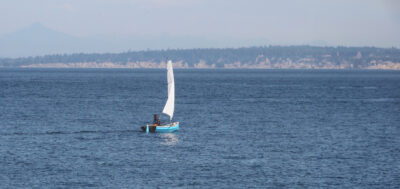
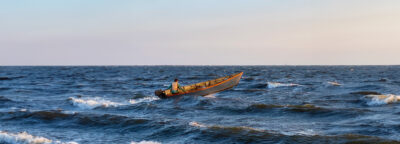

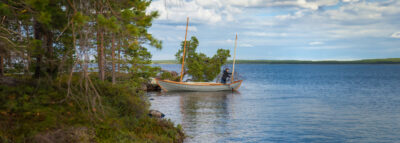
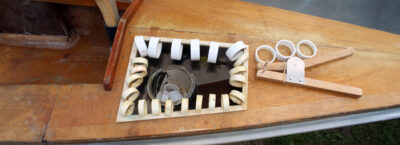
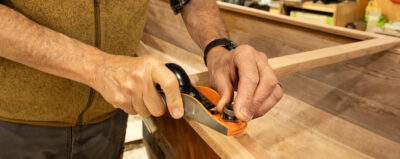
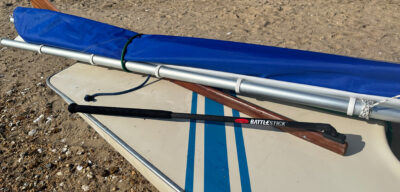
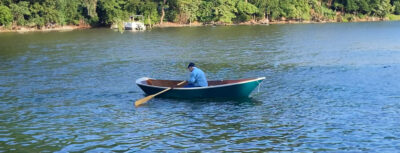
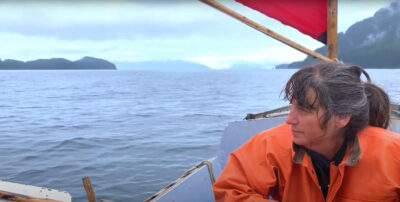
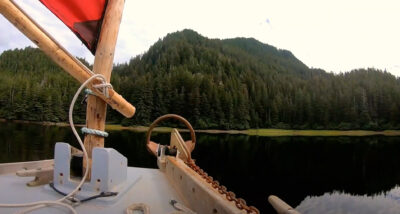
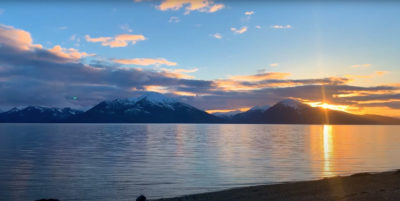
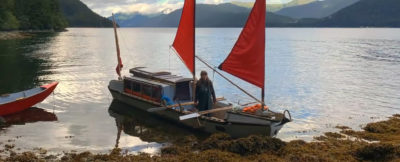
Hi folks!
Thank you for the latest video. I just love this boats utilitarianistic, workboat feel. I think your approach to its creation is spot on.
Originally I was thinking of building it just a bit bigger to accommodate my preconceived notions. But now I realize that the size is actually fine for my camp-cruiser dreams. It’s just more of a reconfiguring of your original design that I could do to realize my hallucination. Most of that is solely based around the difference in our environments and intended use.
I still feel like this is the perfect boat for my meanderings around the shallow tributaries and streams between Kentucky and Tennessee and further to the Ohio and Mississippi River tributaries that feed my two Lakes, where I’ll be sailing the most. Land Between The Lakes State Park, situated between Lake Barkley and Kentucky Lake.
I can’t wait to see your upcoming videos. And I will definitely be purchasing the plans when you get them ready.
Thanks again and fair winds!
I forgot to comment on the awesomeness of the sliding hatch. I think I’m, at present, the only one here commenting on this extremely cool boat design.
But nonetheless, I originally didn’t think that I would like that big hatch. I like it a lot more now. But what is the purpose of such a hatch? I remember seeing a couple of Phil Bolger’s boats that had an open top. The Birdwatcher and another builder on Duckworks, Jim M., who had a similar open roof so walking for and aft is easier. But besides that, what are the advantages? It looks like a fairly complex hatch to build.
Hi Will,
Thanks for the kind words! Your plans sound exciting and your cruising grounds lovely!
Phil Bolger’s Birdwatcher design used a fabric cover for the long, open gangway which provides lots of ventilation (to counter the Cabin’s greenhouse effect), what he called “infinite headroom” down the centerline, ability to stand and even steer from the cabin’s protection and — in BW’s case — to raise and lower the main mast, which he set in the gangway’s forward corner. The high coamings also provide an extra margin of knock-down safety and structurally support the cabin decks.
Anke prefers hard hatches for our wet climate, and I came round on this one. What appeals to us is the ability to open a large opening at the forward or aft gangway, or split the difference with easy slides, and a place to mount the solar panel. We lose the ability to stroll standing from one end to the other in fine weather.
It was challenging to figure out the track and details, but once the head-scratching was over, they’re very easy to build. Easier, in fact, than a mid-deck and two separate hatches. The rail tracks are simple table-saw cuts into coamings and lower side pieces (whose beveled tops align with the upper track).
Hatches themselves are plywood rectangles reinforced with 1×2 top beams, with planks attached as side lips with bar metal slides, angled to match the tracks. No ends means they’re lighter and that much easier to build.
Those top beams and crowned end-pieces shed water off to the sides… only trick is to give enough clearance between hatches to let the upper one closely clear them.
These hatches aren’t airtight… we build our hatches ‘uncloseable’ since we have a live fire under decks. Don’t want to forget to ventilate no matter how cold the night!
Dave Z
Hi guys,
I know you are in the “trials” phase out in the Inside Passages, it’s great that you are doing it. I have been a life-long sailor and have owned a few boats of different persuasions and the one thing I see with your boat, rig and outfit is a lot of stuff loosely fit and lightly secured or not. In a full broach roll over, there looks like you would have kit scattered all over the place and there you’d be on a hostile lee shore. Just heading into a breaking wave head on, it looks like there would be water squirting from all over.
There is a great YouTube video of a boat loaded up and mechanically rolled and there was stuff flying around from every direction. It might be interesting to gimbal your loaded boat on land and see what’s what!
Jim
Hi Jim,
Thanks for your observations and concern! We agree that fail-safer arrangements are the best insurance.
We designed MUSTELID for protected waters, and even so, get out of conditions that would threaten a roll-over. Due to her 6″ draft with retractable appendages (nothing to ‘trip over’) a broach is unlikely in the first place and results in ‘skitter’ rather than a roll in the second. Given that we really don’t expect to be able to drive MUSTELID to windward in heavy conditions, it’s hard to imagine meeting a breaking wave head on. We’d definitely be out over our heads in steep, breaking waves. But your point is well taken.
A fortunate feature of SE AK is that lee shores are fairly rare (with the exception of embayments at the heads of inlets and fjords)… wind tends to run along or diagonally across straights and passages. So with a few exceptions, lee shore situations are easy to anticipate and avoid. But your point is well taken.
We intended to install tie-downs along the cabin sides and galley (which never so much as shifted while underway), plus the main anchor and anchor locker seats early in the trip. Meanwhile, the lockers and masts are fully secured. Oars are, indeed, only lightly secured to enable easy access. We intend to add a second bungee to help secure their aft ends.
Some of this has since been installed, though later than it should have been. We are still remiss in installing all that is intended. MUSTELID’s high stability has lulled us into an ill-advised sense of security.
Thank you for this reminder to get on it before heading out again!
Dave Z
Hi Dave,
Wonderful story very relevant to similar adventures in the tropical north of Australia particularly the Gulf of Carpentaria or Arnhem land. Really on your own there where self sufficiency , very shallow draught and simplicity beats everything else.
You are very familiar with Phil Bolger so why not a drop down single leeboad outside the hull? Cheap construction plywood and fittings that can tear off in a grounding crisis without hull damage.
Might give you another point to windward in not too steep seas. Works for me.
Fair winds ( but not too much ! )
Andy
How about sprit booms a la Bolger?
No vangs and easy going about without wild gybes.
Hi Andrew,
We’ll have to catch Australia in our next life… sounds wonderful!
RE the Boards… You’ll see in Episode Six that we can drop one or both Boards down. And you’re right; they cancel quite a bit of leeway. The double use of Boards for cockpit platform and off-center Boards was the original, central idea at the core of this design. Been hauling that one around for years.
RE sprit booms… We’ve sailed extensively with these and like ’em (MUSTELID’s driver has one). Their drawback relative to Quick Rig is that they’re harder to reef, require overhead work, and are marginally harder to stow. The snotter means we’d have to get cleverer than we are to make it work with roller mast furling.
But it’s an open rig design… ya get to roll yer own!
Dave Z
Hi, I have enjoyed your video even though I don’t know anything about boats but I was interested in your rocket stove. Did you fabricate that yourself or is that commercially available somewhere? Good luck on your voyage and adventuring and thanks for making these videos.
Hi John,
Sorry for the late reply!
Our rocket stove is an EcoZoom Versa, which we bought from Amazon.
We were looking for low height/center of gravity to attempt pressure canning, and the two doors facilitate using charcoal. The EcoZoom has cast-iron parts, some of which could be forwarded to a DIY successor. The firm is associated with Approvecho, who came up with the rocket stove concept.
It’s currently going for ~$150.
There are a LOT of options, however… well worth looking around for a good fit with your purposes!
Dave Z